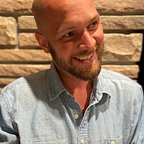Notes on the Modern Banishing of Evil Spirits
I am reading a book on the traditional culture of the Kikuyu tribe by Jomo Kenyatta, the first president of Kenya and an old member of the tribe. He grew up in the days when Kenya was hardly influenced by Europeans, then attended an English university, so in a way he “speaks” both languages: Western anthropology and Kikuyu tradition.
In the book, he describes the ritual undertaken when the tribe was stricken by a disease or epidemic which could not be cured by their wide variety of traditional remedies. Essentially, they banished evil spirits from their country. And I was thinking how, in modern times, we undergo an analogous ritual when an unknown ailment strikes.
First, the Kikuyu ritual. The elders of the tribe would gather together and agree that there is no medical remedy for the illness and that “physical force has to be applied against the enemy,” assumed to be evil spirits. The people then appoint a day to fight the evil spirits, and in preparation they gather old clubs and sticks. The evening of the battle, war horns are sounded and everyone rushes from their huts, clubs in hand. They yell to frighten the spirits and beat their clubs against bushes or other sticks in a rhythm particular to this ritual. In this manner everyone makes their way to the river, then together they throw their clubs and sticks into the river to symbolize sinking the evil spirits to the depths. All the people then return to the village without ever looking behind them at the river, ensuring that no memory of the misfortune follows them home.
It’s not scientific, by Western standards. But I imagine that, if a scientist were to study the effectiveness of the ritual on various ailments widespread in the community, they might be surprised by its effectiveness, even just considering it as a placebo. Fear is a powerful motivator, and if a ritual manages to instill confidence in the hearts of the community it can do a great deal of good.
Now, Westerners don’t believe in spirits much anymore (or share many religious beliefs at all), so I asked myself — how do we “banish our evil spirits” when an unknown disease strikes? And I was reminded of the Ebola crisis of 2015–2016, which caused a good deal of fear in the world. Though the danger to most people was minimal, there was a feeling of helplessness in the air during that time. So in what ritual did we put our confidence? In the medical identification of a treatment. Daily news reports were made about how there was no treatment and thus no guarantee that the illness wouldn’t spread worldwide. But when the medical community identified a cure which was mildly successful, news coverage soon diminished (coupled with a slower spreading of the disease). Our “ritual” to reduce fear, in a sense, was the tradition of Western medical research. Our casting of sticks into the river, in a sense, was finding a way to keep people with Ebola alive.
Of course the differences are real, first and foremost that reducing fear by finding a cure is probably more effective than a ritual to banish evil spirits. But I am confident that much of the utility of both rituals is simply to reduce fear in the community, providing a shared confidence that we have the situation under control — that we know “the answer.”
And perhaps there are other applications for this idea, ways to find rituals for shared confidence when communities or individuals feel lost and hopeless. Could the economic stagnation of rural America be partly a condition of shared hopelessness in modern solutions? Could the struggles of poor urban neighborhoods be partly due to a feeling of helplessness against the political and economic processes surrounding them? If so, are there rituals or processes which could build a shared confidence, possibly — coupled with the needed structural changes — giving these communities the strength to walk away from the river without a glance back at the sticks floating slowly away?
